Playing chess without knowing chess openings is quite like playing with fire. As a beginner, I was confused about which chess opening to learn and which one to play.
It all led to many wrong choices. So, here I am to warn you against the worst chess openings so that you don't end up regretting as I did.
- What are the Worst Chess Openings in Chess?
- Conclusion
- FAQs
- 1. What are the worst chess openings to avoid?
- 2. Why should I avoid certain chess openings?
- 3. Are there any chess openings that are considered universally bad?
- 4. How do I identify a bad chess opening?
- 5. Can bad openings be useful for surprising opponents?
- 6. How can I learn about chess openings to avoid?
- 7. Should beginners focus on avoiding bad openings?
- 8. What are some good alternatives to the worst chess openings?
- 1. Why is f3 a bad opening?
- 2. What is the weirdest opening in chess?
- 3. Is Grob's attack considered a good chess opening?
What are the Worst Chess Openings in Chess?
1) Nh3 | The Amar Opening
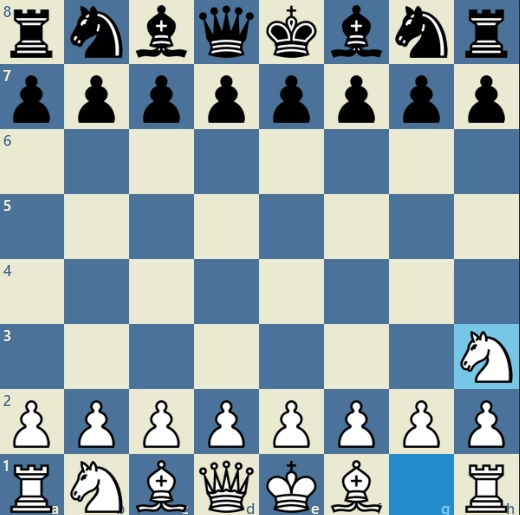
This opening got its name from the Parisian amateur chess player Charles Amar in the 1930s. It's risky and endangers everything on the kingside.
According to Chess Explorations by Edward G. Winter, Chess author Tim Harding described AMAR as "absolutely mad and ridiculous." Once you learn the consequences, you will realize that Harding was right. If you're a beginner, NEVER play this opening. NEVER.
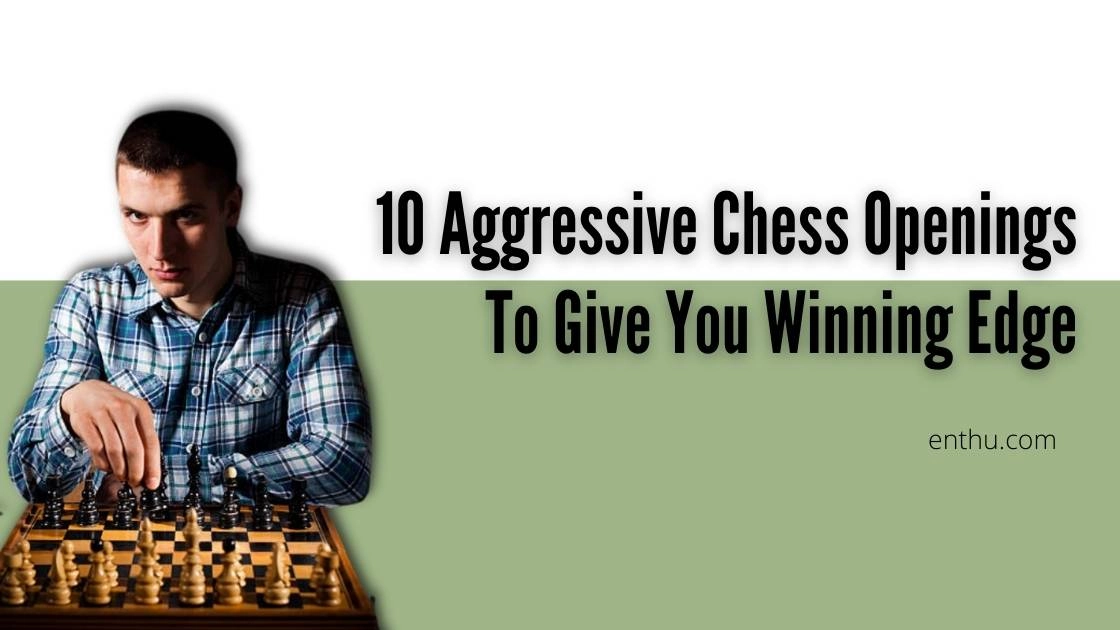
Why is the Amar opening the worst opening ever?
When White opens with 1. Nh3, black mostly plays 1…d5. In the next move, black plays 2…Bxh3 to capture the knight, regardless of what white plays. If the knight remains on the h3, the kingside will collapse in the next few moves.
After the capture, white plays 3. fxh3. While revenge is acceptable, White mustn't forget that it opens a whole file, putting the king's safety at risk.
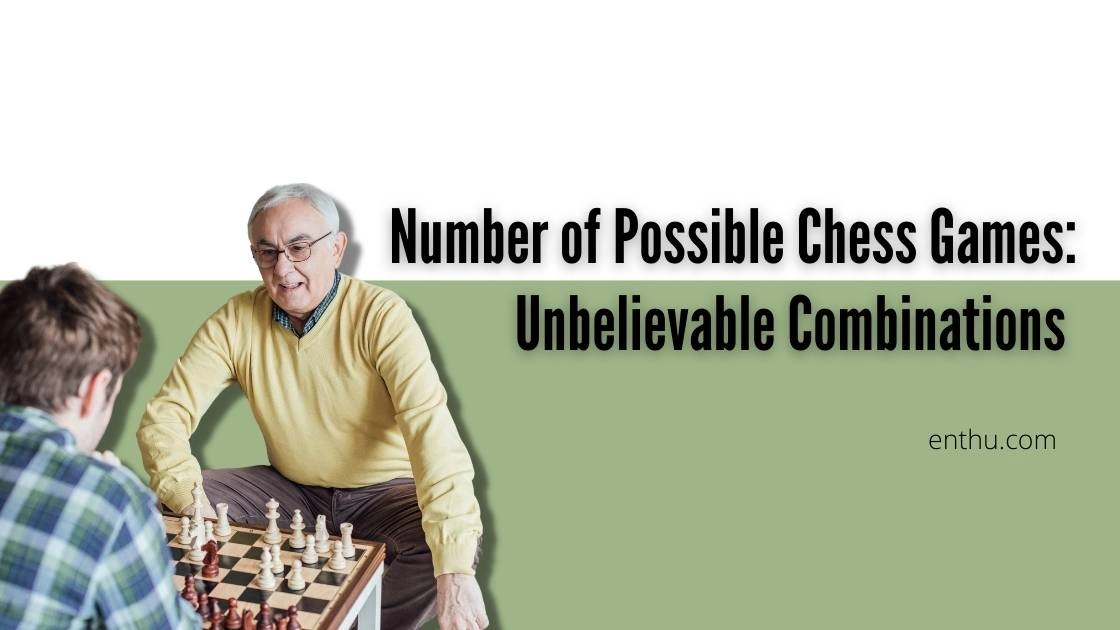
2) f3 | Barnes Opening
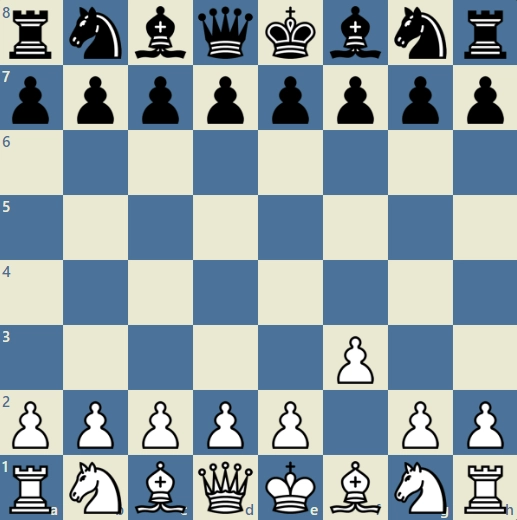
This opening is named after the English chess master Thomas Wilson Barne. He was a legendary player with a record of 8 wins against Paul Morphy. Primarily, he's accoladed for his extraordinary f-pawn openings.
As a matter of fact, the 2. Nf3 variation of Ruy Lopez is popularly known as Barnes Defense. Therefore, 1. f3 got the name "Barne" attached to it even though Mr. Barne wasn't advocating this opening.
Along with the Amar opening and a few more, the Barnes opening is classified under the code A00 (irregular openings or uncommon openings) in the Encyclopedia of Chess Openings.
The Barnes opening 1.f3 is the worst opening ever because
Doesn't develop a piece or open any lines for pieces.
It takes up the f3 square where the White's king knight moves to develop.
Weakens white's kingside pawn structure.
Opens the e1–h4 diagonal against White's uncastled king.
3) 1.a4 | Ware Opening
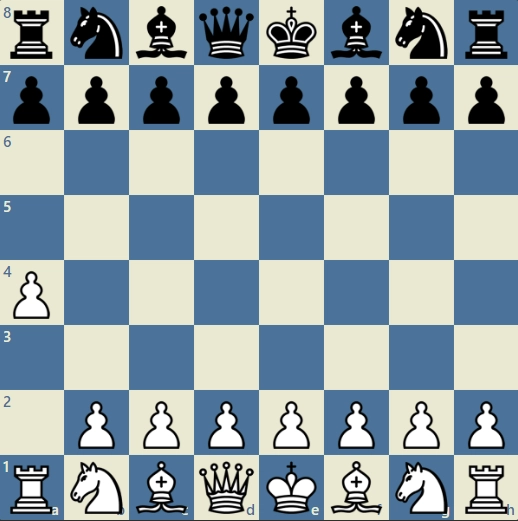
It's named after a U.S. chess player, Preston Ware, who often played uncommon openings. This opening is also known as Meadow Hay Opening. The Encyclopedia of Chess Openings bears the code A00. Most players play the Ware opening to bring out the queenside rook.
The Ware opening 1. a4 is the worst opening because
Doesn't take up any central space for White.
If the queenside rook moves to a3, it's directly under attack by the black kingside rook.
Weakens white's queenside pawn structure.
4) 1.g4 | Grob's Attack
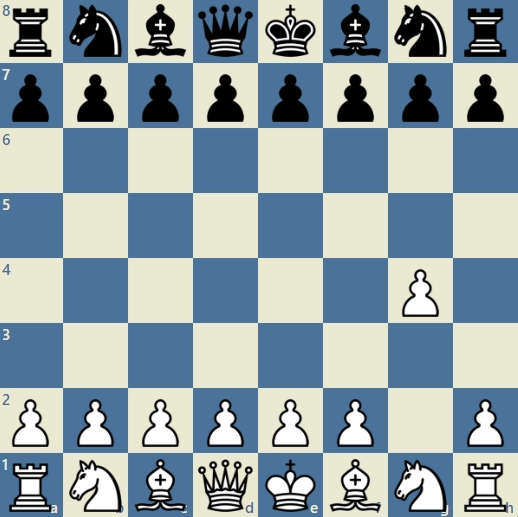
This opening has its name derived from the Swiss International Master, Henri Grob, in the 1930s. It's also known as the Spike Opening, as Henri Grob himself referred to this opening with this name.
Other popular names are Ahlhausen's Opening, after Carl Ahlhausen, who was one of the first players to play 1.g4. Anatoly Karpov once played Grob's Attack in a friendly match against Susan Polgar in Lindsborg, Kansas 2005.
The Grob's attack 1. g4 is the worst opening because
Doesn't take up any central space for White.
If the black plays the queenside bishop on b7, the white kingside rook is directly under attack.
Weakens white's kingside pawn structure.
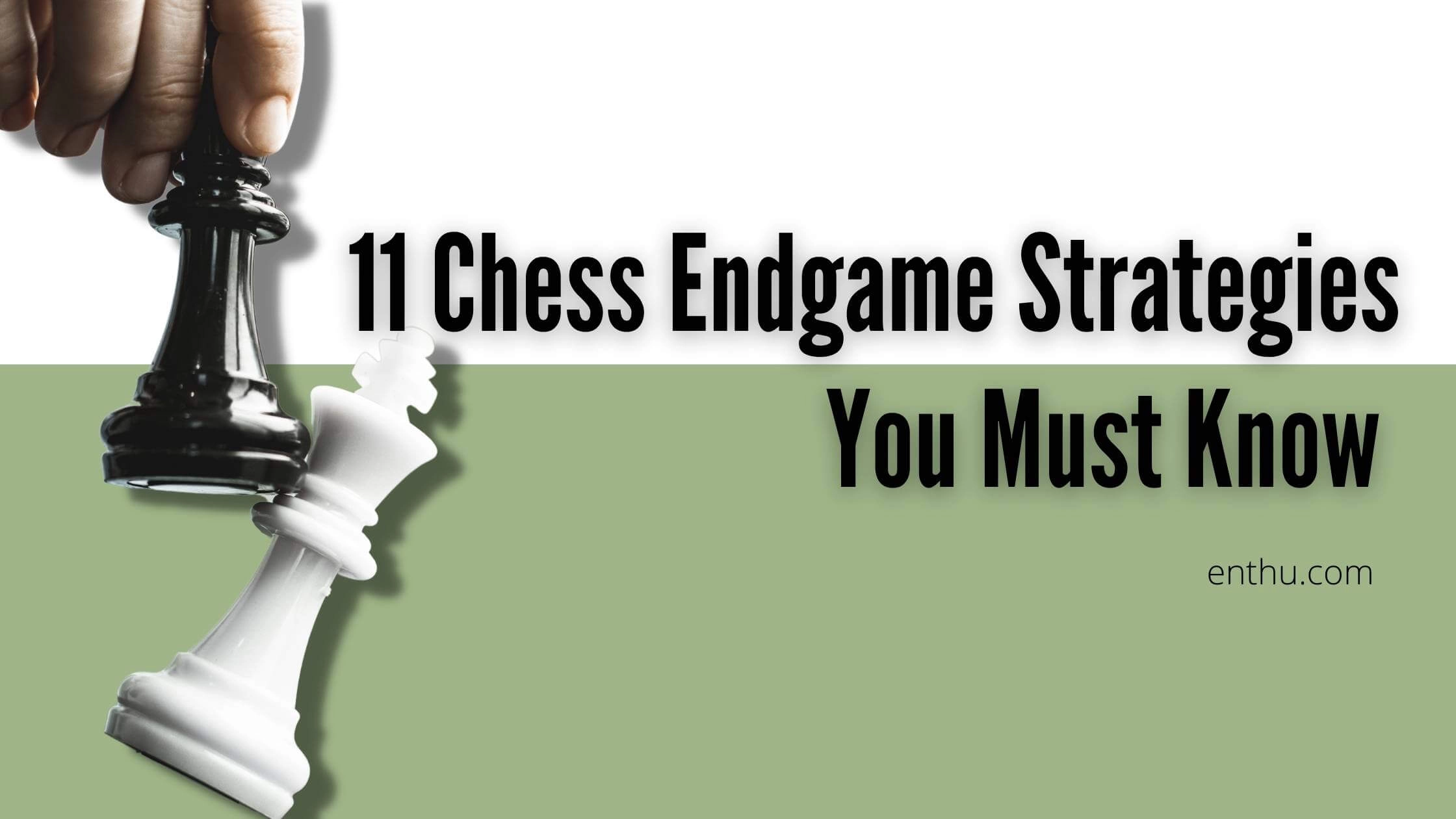
5) 1.e4 e5 2.Ke2 | Bongcloud Attack
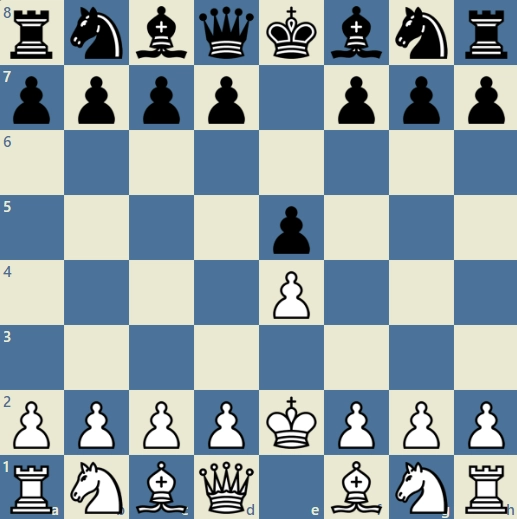
The English grandmaster Nigel Short described this opening as an "insult to chess." Often played as a joke, this is chess players' reference to a cannabis smoking device, a bong.
One should NEVER play this opening. It's a very big red flag for beginners. Just keep in mind that a good opening is NOT touching the king. Keep its options for castling and try to develop other pieces instead of manhandling the king.
The Bongcloud Attack is the worst opening because
It makes the king an easy target.
Gives up any chances for castling.
Weakens white's pawn structure.
Loses a tempo.

6) 1.h4 | Kadas Opening
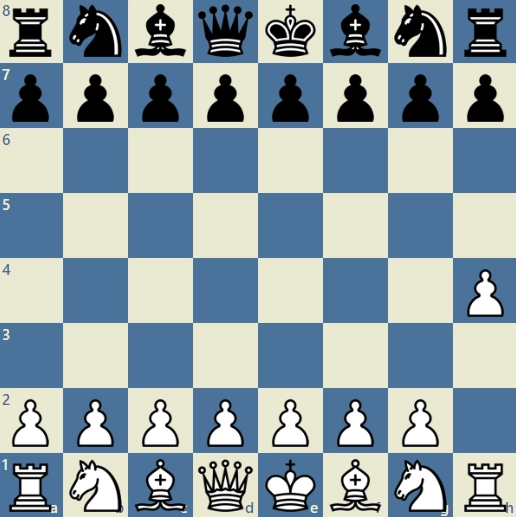
1.h4 was named after a Hungarian chess player named Gabor Kadas. It is also called Desprez opening, after the French player Marcel Desprez. Some other alternate names for 1. h4 are Anti-Borg Opening, Samurai Opening, and Harry's Opening.
It's one of the 20 rarest openings in chess and is recorded under the A00 code in the Encyclopedia of Chess Openings.

The Ware opening 1. a4 is a bad chess opening move because
Doesn't exert any power on the center of the board.
If the kingside rook moves to a3, it's directly under attack by the black kingside rook.
Weakens white's kingside pawn structure.
Gives up any chances for kingside castling, which is the safest option for the king.
The kingside bishop is restricted unless a fianchetto occurs.
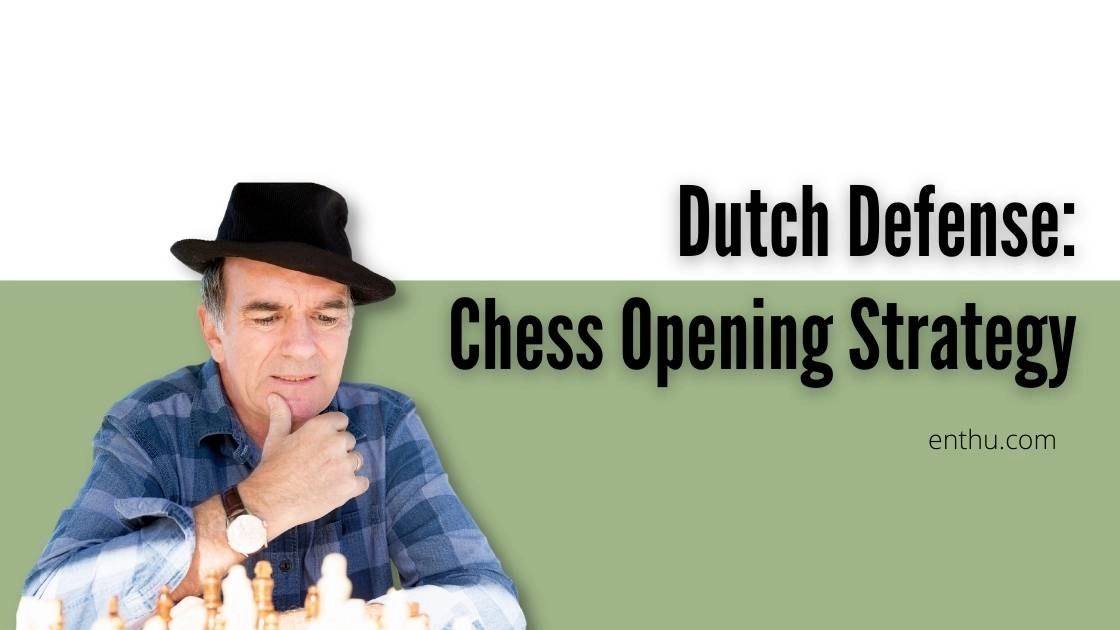
7) 1.h3 | Clemenz Opening
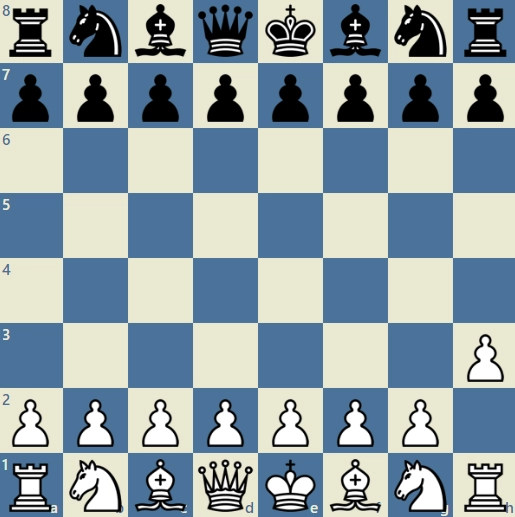
1. h3 is named after an Estonian chess player, Hermann Clemenz (1846–1908). As you guessed by now, yes, It is also considered amongst the miscellaneous openings by White.
Even though 1. h3 doesn't damage white's chances to win entirely like Barnes opening or Bongcloud attack, it also doesn't bring any good luck to White. It's simply a waste of time.
The countable players who open with the Clemenz opening usually play g4 in the next move, resulting in Grob's attack. This opening is a waste of time and is not recommended for any player.
The Clemenz opening 1. h3 is the worst opening because
It doesn't take up any central space for White.
Weakens white's kingside pawn structure.
No pathways are opened for the pieces to develop.
Creates weakness at the beginning of the game.


Conclusion
Dear readers, chess is difficult enough when you try to make the right choices and use the most recommended openings. Imagine what disaster is impending behind the above-mentioned openings. Be careful. Don't try to be Magnus Carlsen in one day.
Try to stay away from the worst chess openings with such a reputation. Remember, the whole game is dependent on your first move. So, think twice before playing the above moves.
FAQs
1. What are the worst chess openings to avoid?
The worst chess openings typically include ones that lead to immediate disadvantages or weaken your structure. Some examples are:
The Grob Opening (1.g4): This opening opens the king's side too early and can lead to quick attacks against the king.
The Orangutan (1.b4): Although unique, it can lead to a passive position and is not recommended for beginners.
The Naïve King's Gambit (1.e4 e5 2.f4 Qh4): This line loses material quickly and can put you in a tough spot early on.
2. Why should I avoid certain chess openings?
Some openings can leave you with a weak position, unprotected pieces, or poor control of the center. Avoiding these openings helps to establish a solid foundation for your game, improving your chances of success against stronger opponents.
3. Are there any chess openings that are considered universally bad?
Yes, while chess is a complex game with many subjective elements, certain openings like the Grob or the Porcupine (1...d6) consistently receive criticism for leading to inferior positions without compensating advantages. These openings are often best avoided, especially at competitive levels.
4. How do I identify a bad chess opening?
Bad openings often exhibit:
Rapid loss of material or position.
Lack of development for your pieces.
Poor control over the center.
An exposed king early in the game.
As you study and practice chess, you’ll become more familiar with these characteristics.
5. Can bad openings be useful for surprising opponents?
While bad openings can catch opponents off-guard, they usually lead to unfavorable positions. Instead of relying on surprise, consider using solid openings that provide better strategic opportunities.
6. How can I learn about chess openings to avoid?
Studying chess theory, watching games of experienced players, and using chess training platforms can help you learn which openings to avoid. Resources such as chess books, online articles, and videos can provide insights on the worst openings and better alternatives.
7. Should beginners focus on avoiding bad openings?
Yes, beginners are encouraged to focus on solid foundational openings that promote piece development and central control. This approach not only enhances understanding but also builds confidence in their game.
8. What are some good alternatives to the worst chess openings?
Instead of utilizing bad openings, consider these solid alternatives:
The Ruy Lopez (1.e4 e5 2.Nf3 Nc6 3.Bb5): A classical opening focusing on the control of the center.
The Sicilian Defense (1.e4 c5): Offers dynamic counterplay and a wealth of strategic options.
The Italian Game (1.e4 e5 2.Nf3 Nc6 3.Bc4): A well-balanced opening that leads to rich tactical battles.
By focusing on effective openings, players can dramatically improve their performance and overall enjoyment of the game.
1. Why is f3 a bad opening?
1. f3 is a bad opening because it doesn't take up any central space as the king's pawn and queen's pawn do. On top of that, it blocks white's kingside knight's developing step.
The biggest disadvantage of this opening is that it opens the e1–h4 diagonal against White's uncastled king. As a result, it compromises the king's safety. Overall, 1. f3 goes against all dos and don'ts of chess openings. Therefore, f3 is a bad opening in chess.
2. What is the weirdest opening in chess?
The weirdest chess opening is definitely the Bongcloud attack. The moves are: 1.e4 e5 2.Ke2. It's the weirdest because of the 2. Ke2 move. There is no possibility of any good outcome of this opening.
It compromises the king's safety, disrupts the pawn structure, and ignores the need for to castle.

3. Is Grob's attack considered a good chess opening?
If so, why? No, Grob's attack is considered one of the worst chess openings ever. The first move is 1.g4, and it is wrong in every possible way.
It ignores the central space, risks losing the kingside rook, and compromises the kingside pawn structure. So, the Grob's attack isn't a good chess opening.

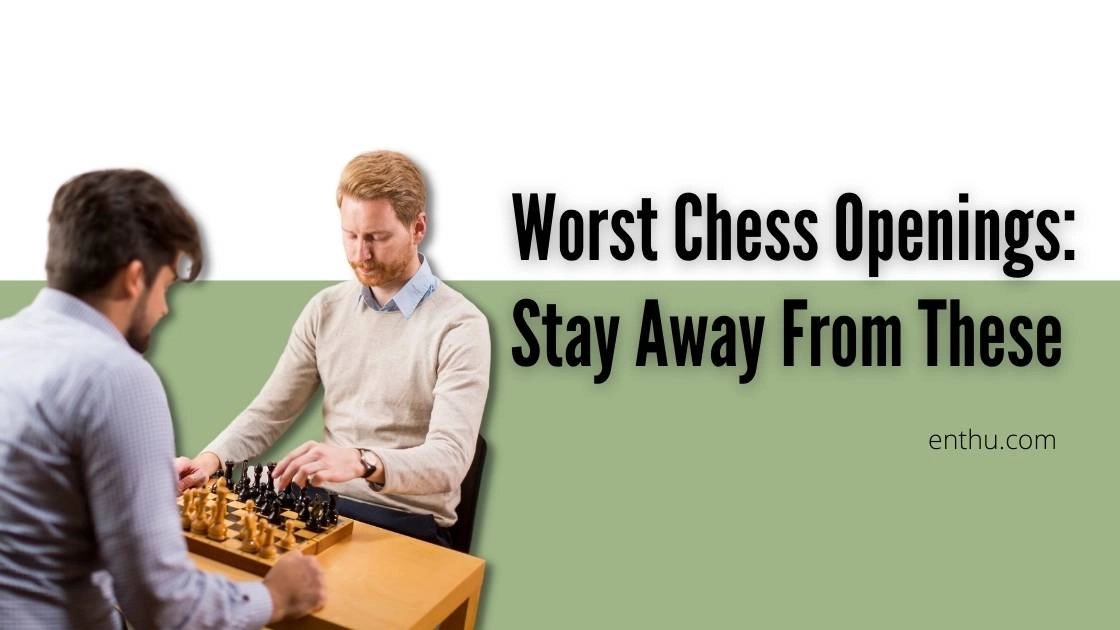
Comments